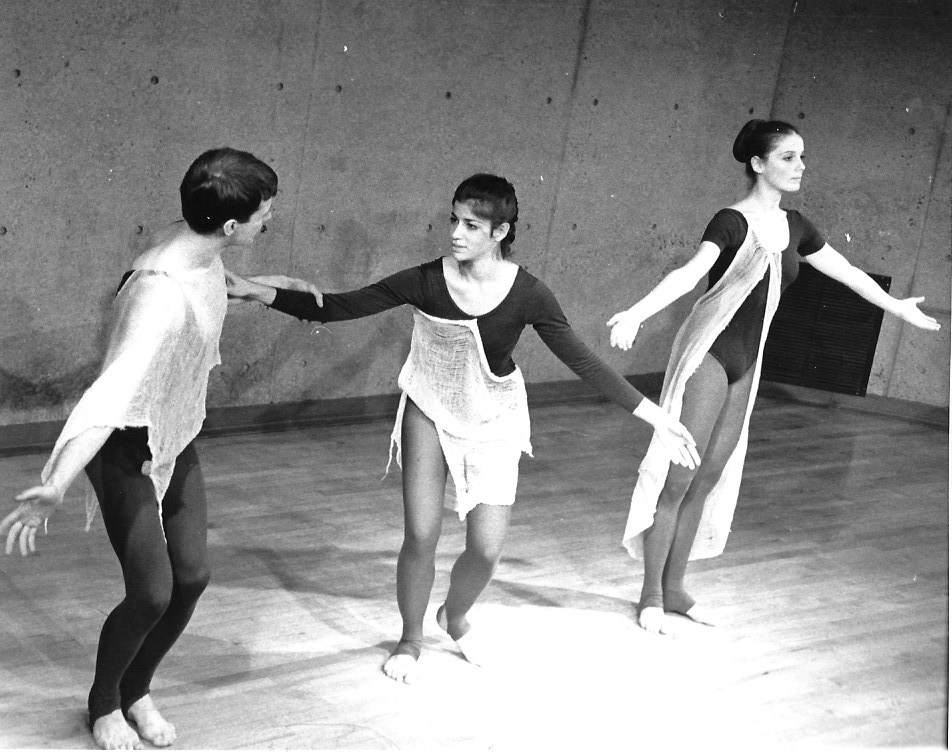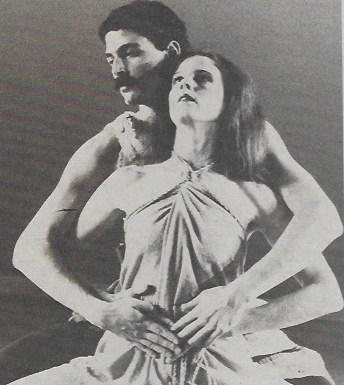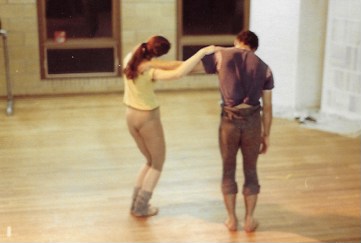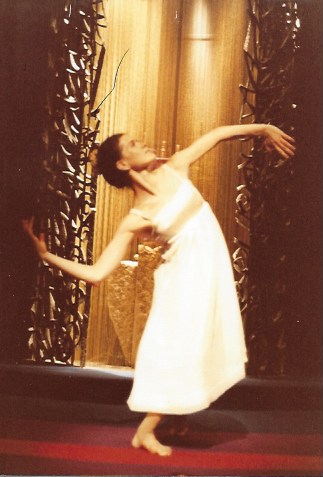“Let My People Go” toured throughout the United States for 11 years, with performances in high schools, colleges, community centers, churches and synagogues! While I’m not sure of the exact number of performances, it was certainly over 50. The original cast made a tremendous impact on the creation of the piece. New cast members each brought their own personality and talent to their role. Each performance had its own story. However, as I continue this series of blogs related to “Let My People Go,” I will focus on the more unusual events as well as programs that grew out of the work. I continue with two different concerts that were strongly impacted by snowstorms.
On Friday night, February 2, 1990, we performed “Let My People Go” at Beth Israel Synagogue outside of Atlantic City in a joint event they had organized with members of the Salem United Methodist Church. Part of the company returned to New York City right away because of commitments they had on Saturday. The next morning, Kezia, Deborah and I began our drive from Atlantic City to Hamilton, New York to be joined on Sunday by the rest of the cast for a performance at Colgate University. Hamilton is located in a rural part of upstate New York. The ride was uneventful until late afternoon, when we were on a small country road not far from Hamilton and it began to snow. A deer came flying out of nowhere and we hit it. Luckily the car did not spin and we easily brought it to a stop. We got out to see the condition of the deer. It didn’t survive the hit. We were devastated by this, and Deborah spent a few prayerful moments by the deer. Since it was a fairly large deer, the front of the car was quite damaged. I can’t remember the next detailed sequence of events,but soon there was a highway patrolman helping us. After he did his paperwork, he said, “Well, the deer’s yours; do you want it?” Kezia was astounded by this request, as if we had been engaged in no-frills hunting of the animal we were mourning. We offered the deer to either him or the tow truck driver, and it was accepted appreciatively. The tow truck driver graciously took us to his cozy home where we waited for a ride to our Colgate hosts. Finally we arrived at an elegant farm-house and enjoyed our lovely hosts’ warm hospitality and their view of the snow beautifully highlighting the trees and surrounding landscape.
The next morning, after awakening again to the magnificent expansive view and silence of snow, we heard from the four other performers that they had rented a car as planned and begun the drive, but the roads were simply too bad and they were turning around and heading back. Hum… here we were with a program planned as a joint celebration of African and Jewish culture in recognition of Black History Month with only two “White” dancers and one “White” choreographer to represent our multicultural piece. Our contact, Moshe Gresser, who was an Assistant Professor in the Philosophy and Religion department as well as faculty advisor of the Jewish Student Group, was supportive and cooperative in helping us to redesign the program the best we could, including involving the audience at points to provide and experience some of the vocal accompaniment. In my scrapbook is a review of the event, published two days later in The Colgate Maroon, which is very kind to our efforts. But we certainly remember some displeased comments made to us, such as, “They couldn’t make it because of the snow??!!??” accompanied by disbelieving faces. We definitely felt self conscious about not representing our piece well. The program also included the wonderfully energetic Sojourners Chorus and the Dean of the College quoting from Dr. King and setting the mood for the event.
Krista Pilot wrote in the review:
Moshe Gresser then introduced the Avodah Dance Ensemble by explaining both its name and its goal in producing the program entitled “Let My People Go.”…. After the introduction, two out of five dancers took the stage and began what the audience assumed was the performance. A few minutes later, however, JoAnne Tucker, the choreographer, interrupted the dance to explain that three of the dancers were stranded in (surprise!) the snowstorm and could not make the performance. The program did continue with an abbreviated version of the entire piece with Ms. Tucker and Moshe Gresser narrating and the audience joining in to provide chanting and background noise. Despite the missing half of their ensemble the remaining members managed to give the Colgate audience a good representation of the complete program.
I am glad I saved the review because our memory was more of a disappointing, strange performance and I am delighted to know that we managed to pull off something respectable. The next morning, after a phone discussion with my husband Murray,and evaluation of the condition of the car, we decided to leave the car in upstate NY since it wasn’t worth repairing, and we all returned to NYC via bus, the weather no longer a problem.

Kezia, in a moment that was easy to perform for the Colgate event.
Photo by Tom Brazil.
Fast forward to 1994. It’s four years after Colgate, and we are scheduled to perform on Saturday, February 12 in Detroit, and then drive to Toledo, Ohio for a performance on Sunday night. Our cantor for these performances is to be Ida Rae Cahana, who performed the role with us in NYC and on tour after Mark finished cantorial school and left the cast.
Ida had graduated in 1993, and it had been almost a year since she had worked with us. Her last performance had been at Metropolitan Synagogue in NYC, where she had a placement as student cantor. It was an excellent, memorable performance, reviewed by Back Stage, but Kezia remembers it particularly well for an additional reason. With her notoriously poor sense of direction, Kezia had left the “dressing room” in the synagogue and gone through a door that she thought was taking her to the performance space, only to find herself locked outdoors (on a cold day), in costume, having to race around the outside of the building and enter through the bustling front-door crowd and audience to get “backstage” for the start of the piece.
But back to Detroit. We were looking forward to a good long rehearsal on Saturday afternoon to refresh Ida Rae’s memory and practice together. I can’t remember whether we were scheduled to fly out on Friday or first thing Saturday morning but our flight was cancelled due to major snow in the New York area. We were due to leave from Newark airport, which was not going to reopen until maybe late on Saturday, and so the airline recommended we fly out of JFK where they could get us on an early afternoon flight. OK, that could work and we would still have time for a rehearsal.
We all managed to make it to JFK, finding various ways to get there. I was on the phone with Cantor Harold Orback (1931-2014), a much loved member of the clergy of Temple Israel. I told him I would keep him posted as to our progress as it already looked like the early afternoon flight was delayed. The program was scheduled to begin at 7 and included a dinner, so most likely we wouldn’t perform until 8 or 8:30. Delay after delay. Finally around 5 we boarded the flight. More delays getting off the ground but at last we took off and I figured we might just get there in time to perform, probably just going over a few cues first for Ida Rae.
We landed in Detroit at 8 p.m. in fairly bad weather. The pilot came on the speaker to inform us that we had slid off the runway and had to wait to be towed in. That added another half hour. I called Cantor Orback. “No problem,” he said, “just come when you can.”
Thankfully, Newman offered to drive the rental minivan, as it was snowing and he had experience driving in snow. As he carefully drove us there, I observed several cars that had slid off the road. We made it to Temple Israel at about 10 and expected that everyone would have gone home. To our surprise, there was a large group that greeted us enthusiastically and appeared to be having an enjoyable evening. I think Cantor Orback, an outstanding performer, and maybe Ida Rae, had been doing an impromptu performance. Kezia thinks the crowd may have been singing, as well as conversing happily. The mood was very energetic and welcoming.
The dancers changed into costumes. We practiced a lift with Ida Rae that Louis had added to the piece. The dancers did a few warm up pliés, and “Let My People Go” began to an attentive audience. Ida Rae remembered all of her part wonderfully, except one cue, when she forgot to come in. Newman kept ringing a bell to get her attention. I was on the side trying very hard to wish her in and struggling not to laugh at Newman’s efforts. After what seemed like a long time to me but was probably just a few seconds, Newman’s prompting worked and in she came, never missing another cue. What a nice ending to a very stressful travel day. The next day we continued on to Toledo for a performance at Ida Rae’s congregation.

Ida Rae on an earlier tour to Denver and Boulder. Pictured from L to R: Loretta Abbott, Newman Taylor Baker, JoAnne Tucker, Deborah Hanna and Ida Rae Cahana. The picture was taken by Kezia on a rare day off when we went sightseeing. Note the snow on the mountains in the background, which was beautiful to look at, while we enjoyed good weather where we were.
[print_link]
Recent Blogs
[catlist name=name of category]





























